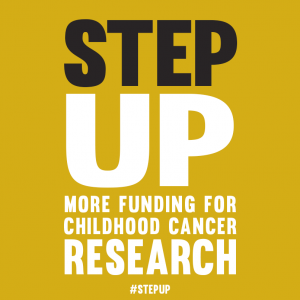100% – Is What the Survival Rate Should Be For All Kids with Cancer
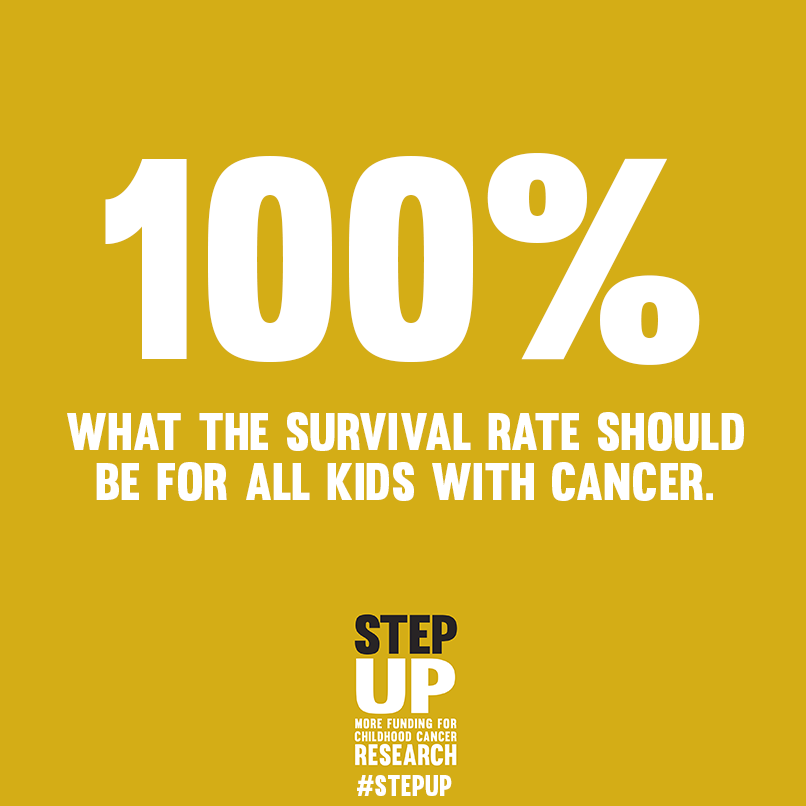
DAY 7: KIDS ARE NOT JUST LITTLE ADULTS
If your child spikes a fever in the middle of the night, do you give him two adult ibuprofen tablets with a glass of water? No, instead you reach for the bottle of children’s ibuprofen because you know the adult tablets could be harmful to him. If your child is in pain because she has broken a bone playing soccer, do you relieve her distress with vicodin or oxycontin? No, because again, you know that they could be harmful, or even toxic, for her. And yet, when a child falls ill with childhood cancer, we don’t question giving that child the same medications and treatments we would give to an adult suffering from an adult form of cancer. Cancer treatments for adults have made remarkable, even miraculous breakthroughs in recent days, but using these cookie-cutter treatments on children instead of investing in new lines of research means that those successes have not been mirrored in survival rates for childhood cancers. As one mother pointed out, “Everywhere I look, I see pink ribbons and I feel thankfulness—and I feel anguish. According to an article published in the New York Times on September 22, 2008, as a result of advances in treatment, ‘98 percent of women with early-stage [breast] cancers survive at least five years…’ Why is this true? Because we have banded together to raise awareness and funding for our mothers, our sisters, our aunts, and our daughters. Our children who are living with, and dying from, cancer desperately need that same attention—and funding.”
This mother learned this important truth in the hardest way possible: as a mother of a child with Diffuse Intrinsic Pontine Glioma, one of the deadliest of brain tumors, suffering from breast cancer herself. Several months after finishing her last breast cancer treatment in July 2008, she expressed her outrage in the lack of interest in childhood cancer:
“September 13, 2008 was our nation’s first Childhood Cancer Awareness Day. I didn’t see anything about it in the news, but I did hear about national “Talk Like a Pirate Day” a couple of days later. I made some calls to our local news stations, but to no avail…one of the story editors simply said, “So—what’s your event?” And again, later—”Pitch me a story.” So I tried giving them the important facts. 2,300 children die from cancer each year. One-quarter of children diagnosed with cancer will not survive. Federal support of childhood cancer clinical trial research is 30% less today than it was in 2003. But the facts generated no interest in national Childhood Cancer Awareness Day. I was told, “We put local news first.”
Okay. I can handle that. I have a list of local events. Like the shock of a family receiving a breast cancer diagnosis on an October Monday afternoon, and taking their six-year-old to the Emergency Room on Thursday only to be told, “There is a large area of swelling in the brainstem; we suspect a mass.” Or like a mother leaving the Pediatric Intensive Care Unit late one night to go home because she knows she needs to get a good night’s sleep before attending an Interdisciplinary Clinic early the next morning—where her own treatment plan will be recommended. Might there be any interest in a story about a local pastor, husband, and father being given the specifics of his son’s grim diagnosis and prognosis in one hospital while waiting for news of the specifics of his wife’s diagnosis and prognosis from the Cancer Center at another hospital?
Looking for a human interest story? How about a mother waking up in her child’s hospital room one morning, showering, and walking downstairs for her lumpectomy—while her husband takes over the duties of hospital parent and waits anxiously in his son’s room for news of his wife’s surgery? How about the same mother moving back into the hospital early on a Sunday morning four days later so that her husband, a pastor, can be in church, only to watch in disbelief as her fun-loving, active six-year-old, determined not to have an accident, becomes too weak to sit up to go to the bathroom on a bedside commode. What about the willingness of that little boy to allow the nurses to help him even with the most private of things—because he knows his mother is recovering from surgery and he is concerned for her well-being?
Not sensational enough? Let’s fast-forward to Saturday, November 24th, 2007, two days after Thanksgiving. A mother sits in a hospital room with her sleeping son. She ends a phone call because she hears an alarm she has never heard before, an alarm letting the nurses know that her son’s oxygen level is dropping. Soon the room is full, and it is determined that the child is disoriented, and then completely unresponsive. Somehow everyone moves with the child on that bed through the hallways to the Pediatric Intensive Care Unit where the intensivist begins the work of saving a precious life. The doctors ask, “Given his prognosis, do you want us to resuscitate him, if necessary?” The father, who has just arrived, breaks down in the unbelievable stress of the moment. The mother realizes the urgency of the situation, pushes emotions aside, and asks, “Do we know what is happening?” The answer is no. “Then, yes, we want you to do everything you can for him.” She stands at the foot of the bed with one of her son’s oncologists. Together, they watch the PICU teamwork, with purpose, like a machine. The mother steps outside the room only when the child is intubated. The drama continues, as the entire department revolves around that one room, that one little boy. The eyes of those outside the room—every nurse, every resident, every doctor—are looking in the same direction. The parents sign permissions as they are handed to them, and the work goes on. Everything seems to be happening in slow motion. Finally, the intensivist approaches. The child is critical, but stable, on life support.
This is the story of the first month of our lives in the pediatric cancer world. What will it take for people outside of the childhood cancer community to notice what is happening to our children? What will it take for everyone to understand the urgency of the situation? What will it take for the federal, state and local governments to finally engage in the fight? Will it be the cancer diagnosis of a celebrity’s child or the child of a political leader? Will it be the death of a child belonging to someone in the media? Will it be your child?”
In October 2013, this mother marked six years as a cancer survivor. In her words, “I am no longer the mother of a child with cancer; I am the mother of a child who died of cancer on December 4, 2009 at the age of 8.” We can only imagine her outrage, her sadness at the knowledge that modern medicine could save her life, but not the life of her child.
For this child to have the same chances of survival as his mother, we need to invest in research tailored for his specific type of cancer. Just as a child with a fever cannot be given adult ibuprofen, a child with cancer cannot be treated like a little adult with a smaller form of adult cancer. Why must childhood cancers be treated differently? First, children simply don’t get the same kinds of cancer as adults. Children can get cancer in their blood, their brain, their bones, their kidneys, their lymphnodes, or their soft tissues (just to list a few), but they do not get the adult cancers that receive the most attention from researchers and the media: lung, breast, prostate, and colon cancer. Second, childhood cancers tend to be more aggressive and fast-growing than adult cancers. Moreover, because of the aggressive nature of childhood cancers, and the fact that the symptoms are easily confused with normal childhood maladies, childhood cancers are more likely to be diagnosed in later stages, when the disease is more difficult to treat. Finally, because children’s bodies are still in a state of growth and development, they are much more sensitive to the toxic and harsh treatments required to fight the disease. Children who manage to survive their initial diagnosis are commonly diagnosed with secondary cancers directly stemming from their original treatment. And in many cases, the treatments used to fight either the original or the secondary cancer lead to severe long-term disabilities. Children’s sensitive bodies require medications and cures that target their disease, not their entire body.
Why do we tolerate the fact that a woman with breast cancer has a 98% chance of long-term survival, while her son with DIPG has less than a 30% chance of survival? Why do we tolerate the fact that a woman with breast cancer has more than triple the research resources devoted to her than is devoted to her child? Why do we tolerate the fact that in 2008, the year of this mother’s story, funding for pediatric cancer was $26.4 million, while funding for breast cancer research was $584 million? These are facts that we should not be tolerating, because they are intolerable. All children have the right to survive cancer in all its forms. The medical miracles seen in adult cancers can be mirrored in childhood cancers, but only if the same attention and funding is devoted to them as is devoted to adult cancers. Join us as we StepUp to increase awareness of this inequality. Join us as we StepUp to tell the world that cancer’s smallest victims need a larger share of the pie. What can you do? Share a post of Facebook and Twitter. Write to your congressman and remind them, beg them, to support increased funding for research on childhood cancers. Help us ensure that all children have a 100% chance of surviving childhood cancer.
There are many ways for you to help:
- A little bird will shout from the rooftops that kids deserve to be a higher priority. Tweet your members of Congress usingSoundOff with a new message each day. Here is an example tweet:
- I just sent a #SoundOff to my Reps in Congress about #StepUp. Would you hit this link and do it too? http://www.soundoffatcongress.org/nY2f
- Posting to Twitter on your own? That’s great! Please use the #StepUp hashtag so we can track our success. Here are some example posts:
- Step Up: More Funding for #ChildhoodCancer Research #StepUp http://www.soundoffatcongress.org/nY2f
- Children with cancer deserve more federal research funding. Tell Congress to #StepUp: http://www.soundoffatcongress.org/nY2f
- Increase appropriations for NCI #StepUp – More Funding for Childhood Cancer Research http://www.soundoffatcongress.org/nY2f
- Help us virtually storm Congress: Ask your Reps to #StepUp & support more funding for childhood cancer research. Please share!
- Email your Representatives (by clicking either of these links: House and Congress) and ask them to increase appropriations for NCI and reauthorize the Carolyn Pryce Walker Act.
- Change your Facebook and Twitter profile photos to the “StepUp” image
- Directly ask three friends to share the message with their representatives



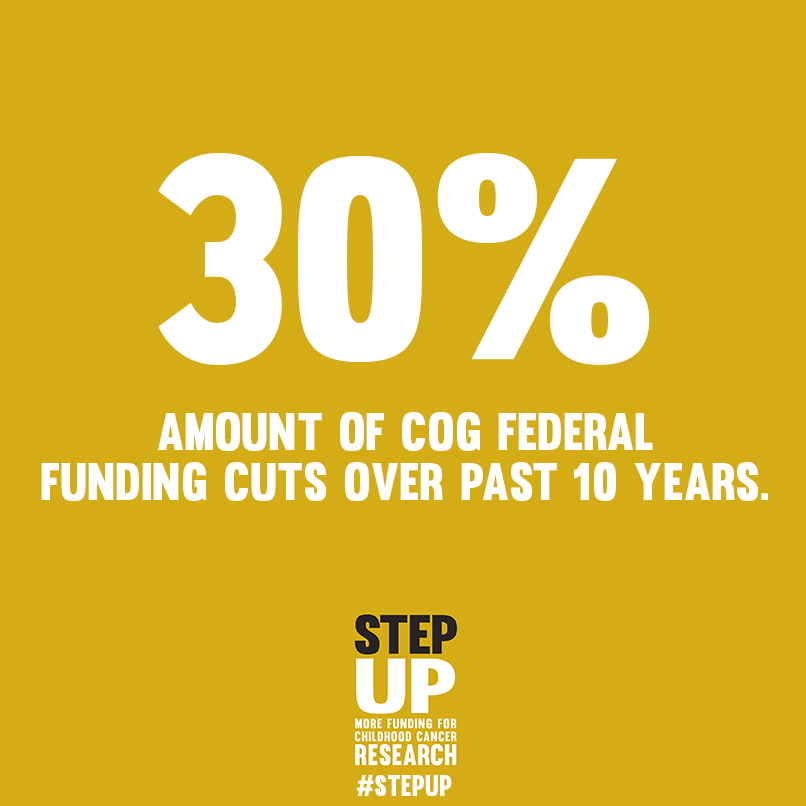
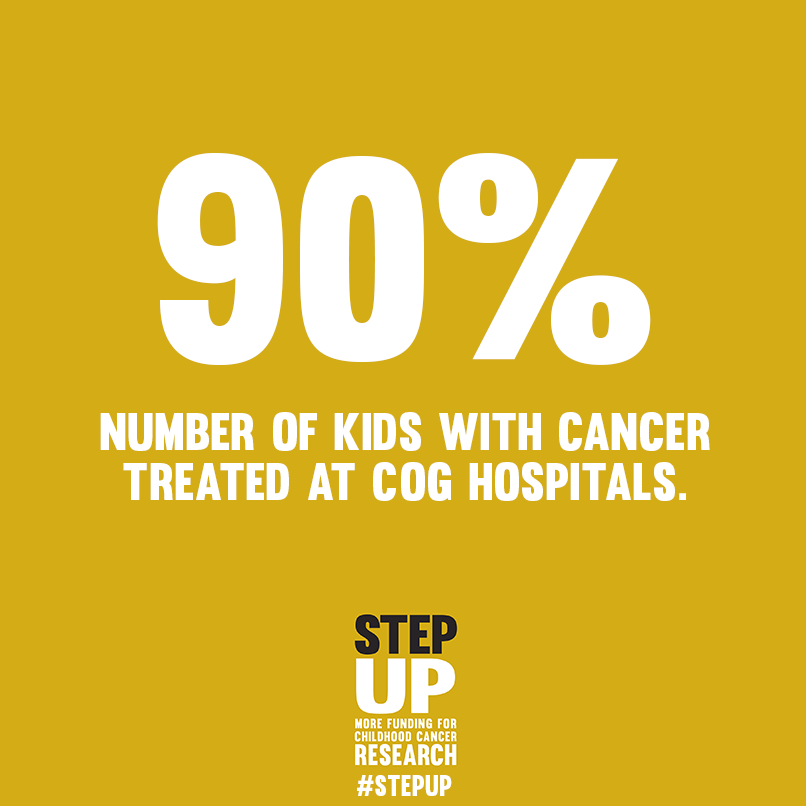

 Obviously, these are difficult days, even when things go “well”—as parents of a child living with cancer, there is no reprieve from the fear and pain of watching your child suffer. But at this phase, we are too immersed in the daily task of living with cancer to dwell too much on the potential dangers lurking in the future. And not every day is terrible. Life goes on despite my fears. We get up each day, and do what we need to do in order to balance fighting the cancer and providing Ollie with the highest quality life possible. He is so much more than a cancer patient—he is a seven-year-old boy, and his childhood still needs nurturing and room to thrive. The only way for a child to spend an entire school-year in a hospital and not lose that precious sense of “being a kid,” is with the help of a compassionate medical team, dedicated to caring for Ollie in a manner that respects and preserves the integrity of his childhood.
Obviously, these are difficult days, even when things go “well”—as parents of a child living with cancer, there is no reprieve from the fear and pain of watching your child suffer. But at this phase, we are too immersed in the daily task of living with cancer to dwell too much on the potential dangers lurking in the future. And not every day is terrible. Life goes on despite my fears. We get up each day, and do what we need to do in order to balance fighting the cancer and providing Ollie with the highest quality life possible. He is so much more than a cancer patient—he is a seven-year-old boy, and his childhood still needs nurturing and room to thrive. The only way for a child to spend an entire school-year in a hospital and not lose that precious sense of “being a kid,” is with the help of a compassionate medical team, dedicated to caring for Ollie in a manner that respects and preserves the integrity of his childhood.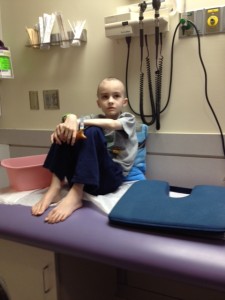 Ollie worries about it all week, and dissolves into tears when the time finally comes. Even after fifty-two dressing changes, the look of pure fear in his eyes is always the same. Ollie’s only comfort in this experience is when he is allowed to remove the bandage himself. Doing so allows him to feel more in control of the process, and he can pull it off in a manner that minimizes the pain. This can be a rather painstaking endeavor, and to accomplish it we need a nurse who is willing to sit patiently by Ollie’s side, encouraging him to remove the bandage at his own pace, ensuring that the quality of care is not compromised. It is this consistently high level of patient care (even when it comes to the smallest of details) that helps us get through our days, and without which, our already fragile sense of hopeful persistence could easily disintegrate. When John Oliver is in pain, and we push the call button to request medicine, every second we spend waiting feels like an eternity. We need medical professionals who understand this, and who share our sense of urgency to help Ollie feel better. We have found this type of responsive, compassionate care from the doctor and nurses at our hospitals.
Ollie worries about it all week, and dissolves into tears when the time finally comes. Even after fifty-two dressing changes, the look of pure fear in his eyes is always the same. Ollie’s only comfort in this experience is when he is allowed to remove the bandage himself. Doing so allows him to feel more in control of the process, and he can pull it off in a manner that minimizes the pain. This can be a rather painstaking endeavor, and to accomplish it we need a nurse who is willing to sit patiently by Ollie’s side, encouraging him to remove the bandage at his own pace, ensuring that the quality of care is not compromised. It is this consistently high level of patient care (even when it comes to the smallest of details) that helps us get through our days, and without which, our already fragile sense of hopeful persistence could easily disintegrate. When John Oliver is in pain, and we push the call button to request medicine, every second we spend waiting feels like an eternity. We need medical professionals who understand this, and who share our sense of urgency to help Ollie feel better. We have found this type of responsive, compassionate care from the doctor and nurses at our hospitals.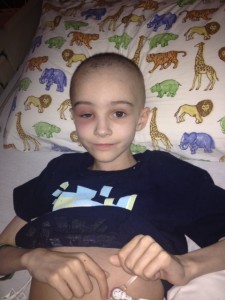 Unfortunately, in the war against childhood cancer, cancer wins most of the battles; however, one of my favorite hospital memories occurred shortly after Ollie’s bone marrow transplant. He was isolated to a hall with eight hospital rooms, restrained by many rules to restrict contact with germs and other hazards while his immune system was wiped out and rebuilt. He was sad, bored, and suffering from mouth sores, seeming to lack interest in anything. The physical therapist came by, noticed his dejected temperament, and arranged a sticker scavenger hunt in the hallway. Ollie had to wear a mask and gloves to leave his room, and the stickers had to be wrapped in plastic to avoid any potential contamination, but it got him out of his room, walking through the little hallway, laughing and playing, even with an IV pole in tow. The sparkle renewed in his eyes was clear evidence that childhood took the victory on this one!
Unfortunately, in the war against childhood cancer, cancer wins most of the battles; however, one of my favorite hospital memories occurred shortly after Ollie’s bone marrow transplant. He was isolated to a hall with eight hospital rooms, restrained by many rules to restrict contact with germs and other hazards while his immune system was wiped out and rebuilt. He was sad, bored, and suffering from mouth sores, seeming to lack interest in anything. The physical therapist came by, noticed his dejected temperament, and arranged a sticker scavenger hunt in the hallway. Ollie had to wear a mask and gloves to leave his room, and the stickers had to be wrapped in plastic to avoid any potential contamination, but it got him out of his room, walking through the little hallway, laughing and playing, even with an IV pole in tow. The sparkle renewed in his eyes was clear evidence that childhood took the victory on this one!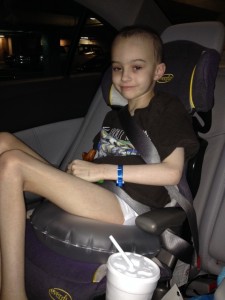 My son’s failing health is not due to incompetent care or denied access—it is directly linked to insufficient funding for childhood cancer research. It is almost impossible for me to fathom that these already inadequate funds are at risk of further cuts. The horrendous suffering of my sweet seven-year-old boy is due to harsh and ineffective treatments; any chance he has of survival is because of the high quality of care we have received at Children’s of Alabama and Children’s Healthcare of Atlanta. I’d invite any congressperson to spend the night on either of these oncology floors and witness firsthand the diligent and committed work of the medical teams, and the profound and heartbreaking suffering of their tiny patients. It is very clear that no funding can be spared, and that to save our children from pain and death, we must prioritize funding for children’s hospitals and cancer research centers. No one should have to watch their child die a slow and painful death when there is the possibility of a cure.“
My son’s failing health is not due to incompetent care or denied access—it is directly linked to insufficient funding for childhood cancer research. It is almost impossible for me to fathom that these already inadequate funds are at risk of further cuts. The horrendous suffering of my sweet seven-year-old boy is due to harsh and ineffective treatments; any chance he has of survival is because of the high quality of care we have received at Children’s of Alabama and Children’s Healthcare of Atlanta. I’d invite any congressperson to spend the night on either of these oncology floors and witness firsthand the diligent and committed work of the medical teams, and the profound and heartbreaking suffering of their tiny patients. It is very clear that no funding can be spared, and that to save our children from pain and death, we must prioritize funding for children’s hospitals and cancer research centers. No one should have to watch their child die a slow and painful death when there is the possibility of a cure.“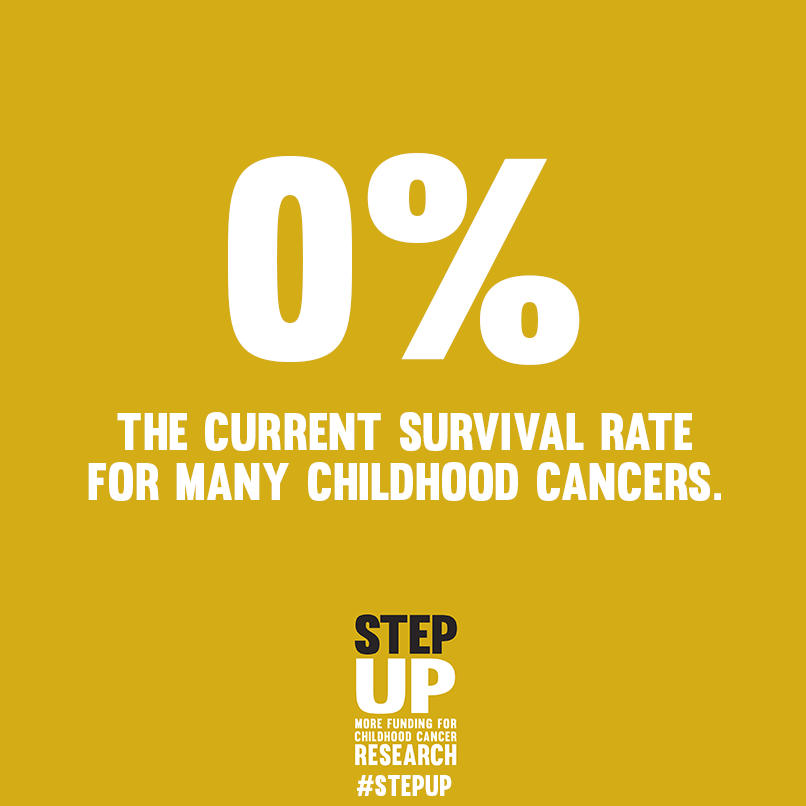

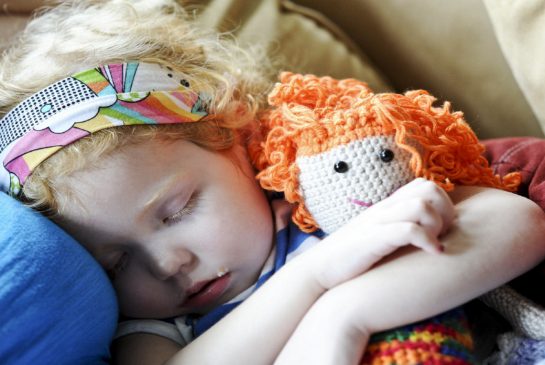
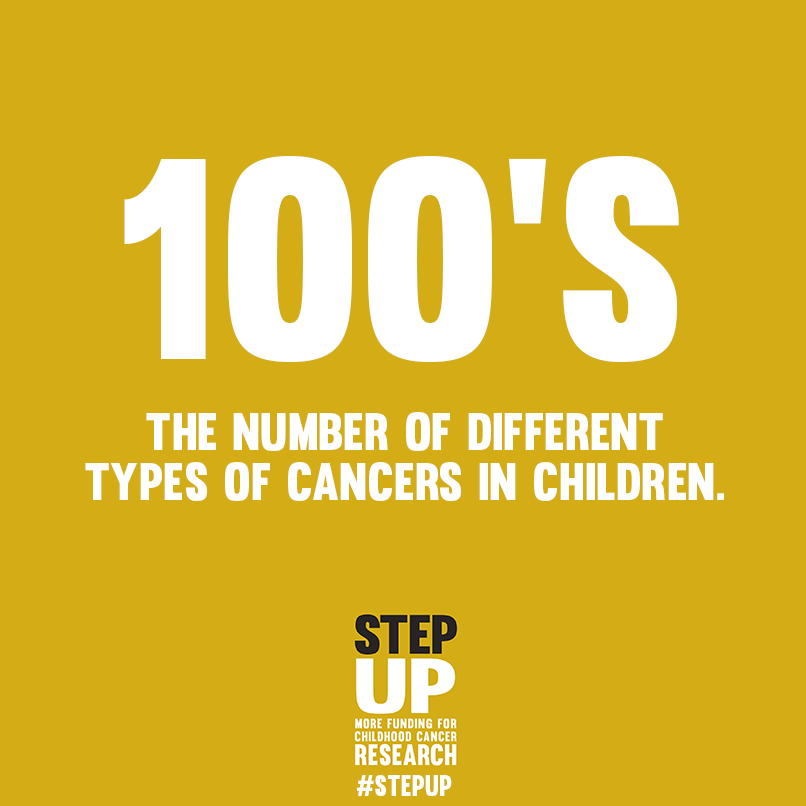
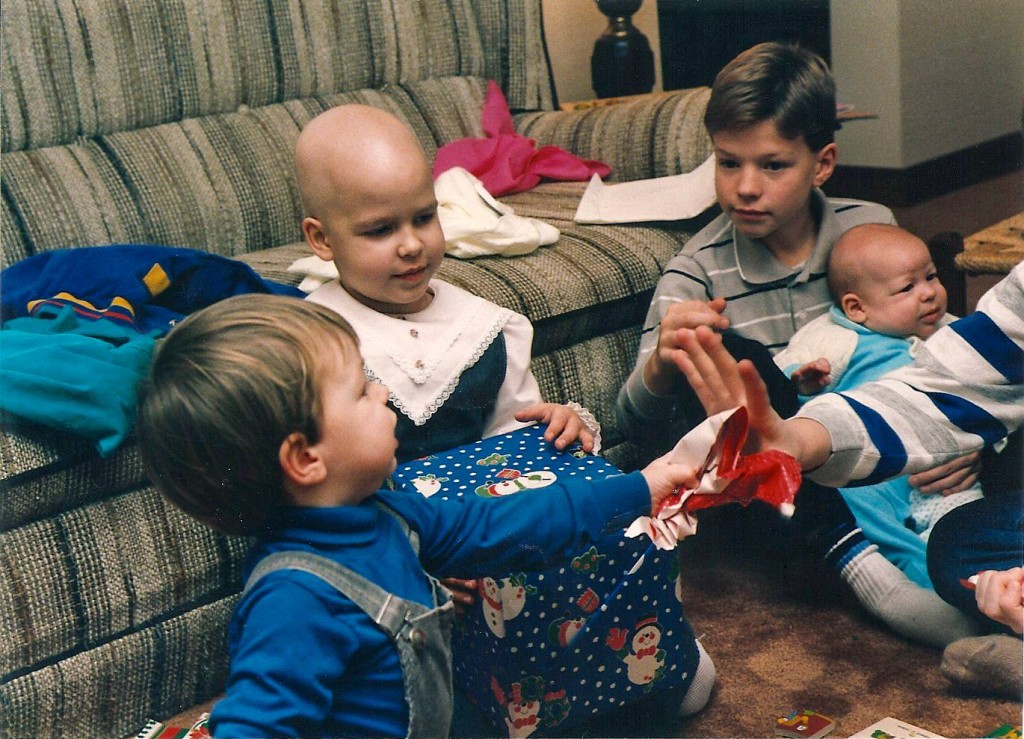
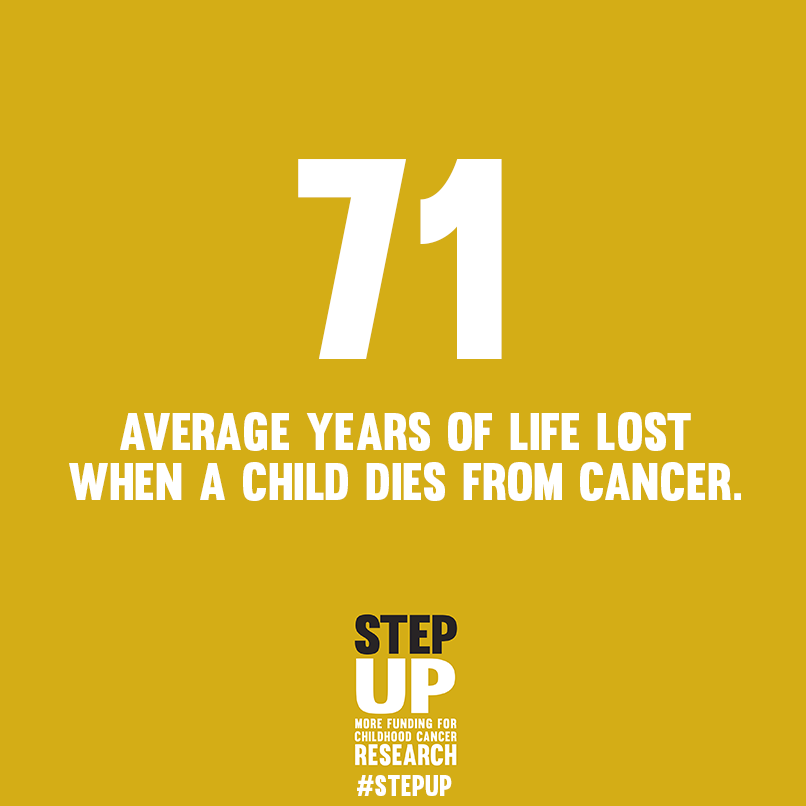
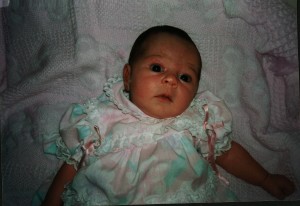 She had this innate wisdom about her that made you feel like you were in the company of an “old soul” who somehow knew that she was here to serve a greater purpose. Long before the diagnosis, you could just tell that if given the opportunity to rule the world, Talia would have done so—with a fairness and wisdom that our world desperately needs.
She had this innate wisdom about her that made you feel like you were in the company of an “old soul” who somehow knew that she was here to serve a greater purpose. Long before the diagnosis, you could just tell that if given the opportunity to rule the world, Talia would have done so—with a fairness and wisdom that our world desperately needs.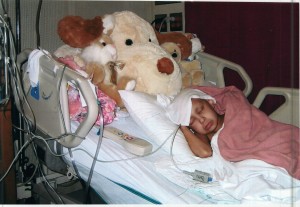 The initial results indicated Lymphoma, and as I struggled to digest this disheartening information the second round of tests and biopsies came back, and the doctor solemnly uttered the words that will forever be etched into my brain, “Talia has neuroblastoma.” I knew from his grave tone that this was a serious diagnosis, but I had no idea what neuroblastoma actually was, or what it meant for the future of my baby, my precious little girl. I began making calls to update friends and family who were awaiting the test results, but when I mentioned “neuroblastoma” to my friend who was a nurse, I was met with an eerie silence from the other side of the phone. It was at that moment that I truly began to panic—what did she know about this horrible disease that I didn’t?
The initial results indicated Lymphoma, and as I struggled to digest this disheartening information the second round of tests and biopsies came back, and the doctor solemnly uttered the words that will forever be etched into my brain, “Talia has neuroblastoma.” I knew from his grave tone that this was a serious diagnosis, but I had no idea what neuroblastoma actually was, or what it meant for the future of my baby, my precious little girl. I began making calls to update friends and family who were awaiting the test results, but when I mentioned “neuroblastoma” to my friend who was a nurse, I was met with an eerie silence from the other side of the phone. It was at that moment that I truly began to panic—what did she know about this horrible disease that I didn’t?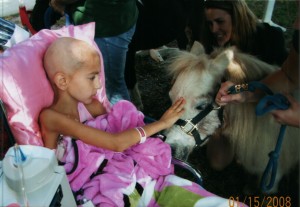 Every day felt as though I was trapped in my own worst nightmare, as I tried to navigate this new, unwelcome life we had been forced into. The words “your daughter has cancer” echoed constantly in my mind and invaded even my dreams, ensuring that there was not a moment’s reprieve from this disease. It is difficult to put into words what it feels like to watch as your child is ravaged with surgery, chemo and radiation, and to be powerless to do anything but hold her and love her as she writhed in pain, vomiting up any tiny morsel her sickly body tried to digest. Helplessly watching my daughter’s hair fall out in clumps until she was completely bald and being unable to protect her as her pure and innocent little body was marked with needle sticks, bruises and deep scars from countless surgeries—this is something no child or parent should ever have to endure, just as no parent should ever have to listen to the best doctors in the country give their child a terminal diagnosis.
Every day felt as though I was trapped in my own worst nightmare, as I tried to navigate this new, unwelcome life we had been forced into. The words “your daughter has cancer” echoed constantly in my mind and invaded even my dreams, ensuring that there was not a moment’s reprieve from this disease. It is difficult to put into words what it feels like to watch as your child is ravaged with surgery, chemo and radiation, and to be powerless to do anything but hold her and love her as she writhed in pain, vomiting up any tiny morsel her sickly body tried to digest. Helplessly watching my daughter’s hair fall out in clumps until she was completely bald and being unable to protect her as her pure and innocent little body was marked with needle sticks, bruises and deep scars from countless surgeries—this is something no child or parent should ever have to endure, just as no parent should ever have to listen to the best doctors in the country give their child a terminal diagnosis.
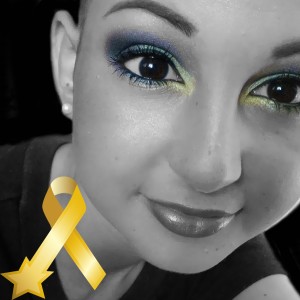 During Talia’s 6 ½ year battle with cancer, she received treatments that were formulated for adults because, due to a lack of funding, there are no new childhood cancer treatments for Neuroblastoma. A child’s body is not made to withstand the strength of these poisonous concoctions, and the very treatments administered to save her life, ended up triggering the development of a secondary form of cancer (leukemia), which ultimately led to her death.
During Talia’s 6 ½ year battle with cancer, she received treatments that were formulated for adults because, due to a lack of funding, there are no new childhood cancer treatments for Neuroblastoma. A child’s body is not made to withstand the strength of these poisonous concoctions, and the very treatments administered to save her life, ended up triggering the development of a secondary form of cancer (leukemia), which ultimately led to her death.